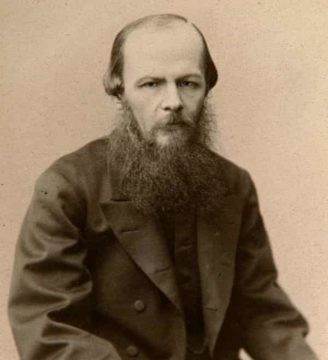Alex Christofi in The Guardian:
 Dostoevsky, it must be said, was no saint. He was famously cantankerous; he had at least one affair during his unhappy first marriage; he was also ruinously addicted to roulette. But he had a brilliant mind, at ease with contradiction, and was determined to use literature to pursue the moral consequences of the ideas that defined his era. To do so, Dostoevsky took inspiration from the real life story of Pierre-François Lacenaire, a charismatic gentleman murderer whose trial had been the talk of Parisian society in the 1830s, fashioning the bones of his life into one of literature’s most compelling sinners: Raskolnikov, the protagonist of Crime and Punishment, a handsome, clever and often kind university student who nonetheless murders two defenceless old women with an axe.
Dostoevsky, it must be said, was no saint. He was famously cantankerous; he had at least one affair during his unhappy first marriage; he was also ruinously addicted to roulette. But he had a brilliant mind, at ease with contradiction, and was determined to use literature to pursue the moral consequences of the ideas that defined his era. To do so, Dostoevsky took inspiration from the real life story of Pierre-François Lacenaire, a charismatic gentleman murderer whose trial had been the talk of Parisian society in the 1830s, fashioning the bones of his life into one of literature’s most compelling sinners: Raskolnikov, the protagonist of Crime and Punishment, a handsome, clever and often kind university student who nonetheless murders two defenceless old women with an axe.
The novel set Russian society ablaze on publication, with reviewers recognising it as a work of “unrivalled importance” written “with a truthfulness that shakes the soul”. (It was also prophetic: in late January 1866, just when the first chapters were being readied for publication, a law student named Danilov committed an almost identical crime.) But Crime and Punishment was no ordinary whodunnit. Instead, the book has been called a “whydunnit”, since the reader witnesses Raskolnikov’s crime in vivid detail almost immediately after the novel is under way. Throughout the story, there is a fatalistic sense that Raskolnikov cannot resist his guilt; if he is not caught, he will confess. The real question is: why? Even the murderer sometimes seems at a loss to explain his actions, and we sense that the final answer will expose the moral workings of his whole generation, who have fallen into the trap of utilitarianism, determined to found peaceful utopias by violent means.
More here.
